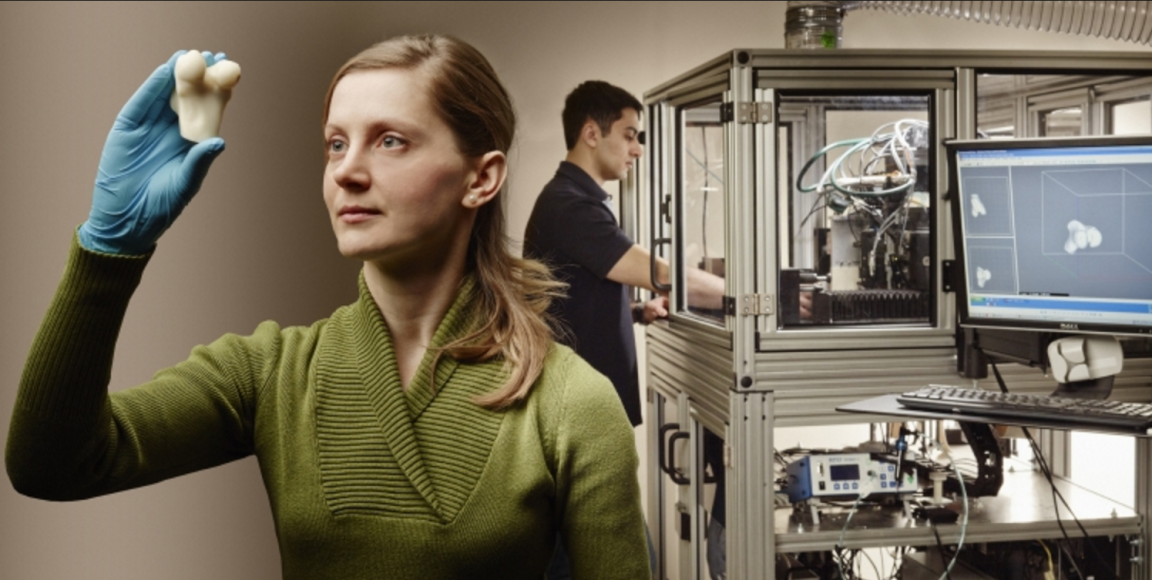
Better substitutes
The area of bone regeneration is one that gets a lot of attention nowadays. After the development of plastic and metal implants for bones, scientists have been steadily trying to find ways to improve this technology. One of the most prominent ways is 3D printing. Using this, we can have bone implants that are not only customized to the patient, but also have special properties not found in mass-produced implants.
One of these new innovations is a 3D printer created by a University of Waterloo Engineer that allows 3D-printed joints that are made of the same minerals as human bone and interlocks with the patient’s cells to create a longer-lasting replacement.
UW mechatronics engineer Mihaela Vlasea graduated in 2008, and a team from the University of Toronto asked her to join their team, which was trying to find alternative materials to plastics and metals in order to make implants.
Vlasea decided to build a state of the art 3D printer for the team.
The printer that she designed and built would 3D print bone-like structures that had a natural, porous surface and nutrient-carrying channels inside of it. The bone and joint replacements that the printer makes will naturally bond with existing bone, tendon and joint material.
New materials
The University of Toronto team is headed by professor emeritus Bob Pilliar, who has found the a great substitute for current implant materials: Calcium polyphosphate.
Calcium polyphosphate is a mineral that makes up more than seventy percent of human bones. It is biodegradable, and could actually be used to connect to the patient’s existing bone cells to encourage regrowth and create a longer-lasting replacement.
All they needed was a machine that could build their bone implants, and Vlasea’s machine fit the bill. The machine, as large as a two door refrigerator, uses ultraviolet light to bind calcium phosphate powder together, all the while creating channels and canals that can carry nutrients and encourage bone to grow over the implant.